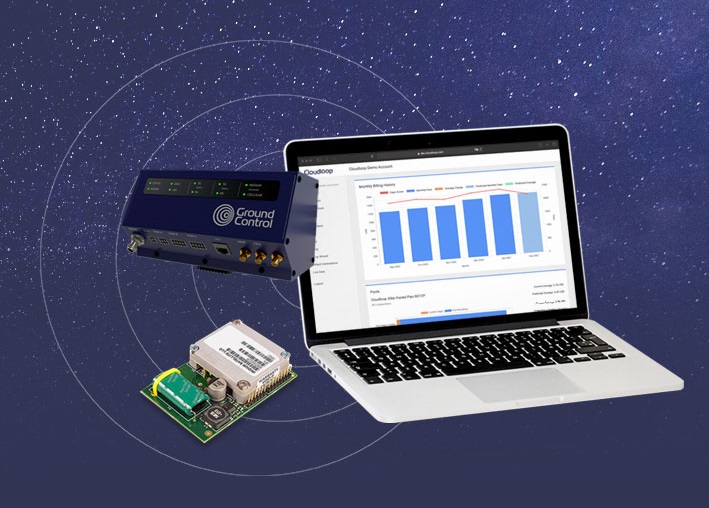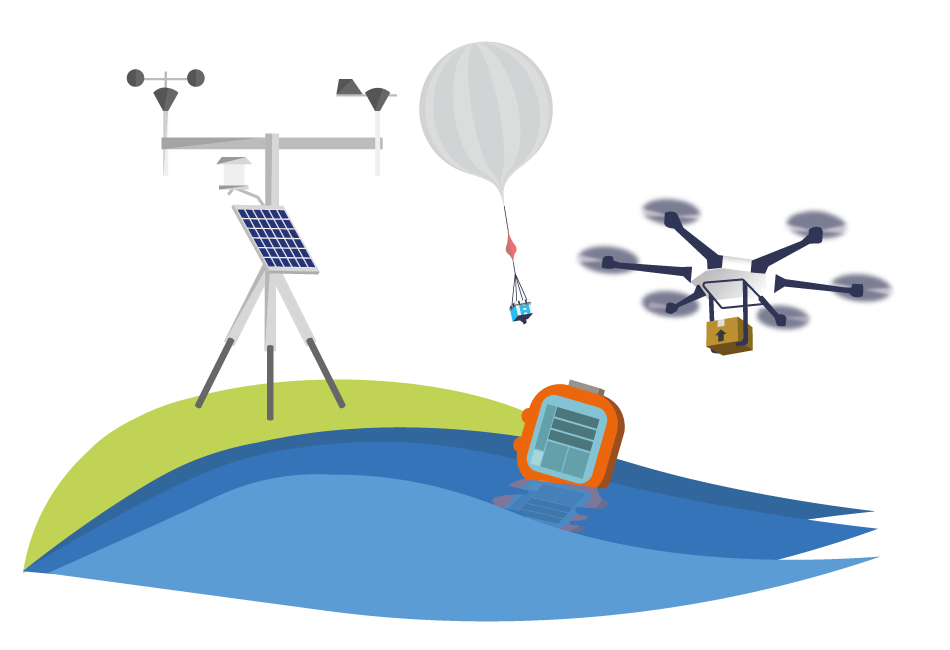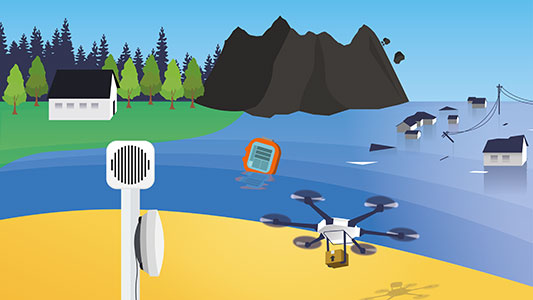Industry 4.0, alias, Fourth Industrial Revolution, describes the integration of advanced technologies such as the Internet of Things (IoT), Artificial Intelligence (AI) and robotics, quantum computing, genetic engineering and more. It represents a shift to a more connected world, whereby the lines between the digital and physical are blurred.
Also referred to as Smart Industry, Industry 4.0 is transforming businesses, enhancing and optimising operations with real-time monitoring and control, and enabling new business models, for example, mass customization.
Cisco’s Annual Report predicted there would be almost 30 billion connected devices by 2023 and Statista estimated 15.1 billion would be IoT connected devices. Though we are still scratching the surface of the possibilities open to us as a result of IoT and Industry 4.0, more generally, all of these technologies and outcomes are dependent on connectivity. Without connection, the insights available via data transmission and analysis remain elusive.
Meeting the demands of a connected world
In order to support this increasingly connected world, governments and organizations have largely focused on building out high-speed broadband networks, expanding wireless coverage and investing in smart city infrastructure. Though some parts of the globe have made significant progress, not least those in developed countries, there are still substantial gaps. At the beginning of 2023 it was estimated that just 64.4% of the global population had access to the internet.
In November 2022, the UK government pledged £5 billion to deliver gigabit-broadband to a minimum of 85% of premises by 2025 and the original target of ‘nationwide’ was pushed back to 2030.
The role of 5G in Industry 4.0
5G’s role in the future of Industry 4.0 is significant. 5G enables a much larger number of connected devices to operate simultaneously, with faster response times and higher levels of reliability. This is particularly important for IoT applications that require real-time data processing, such as smart city infrastructure.
The 5G triangle represents the full spectrum of capabilities, from high speed data transfer to low latency connectivity for mission critical applications, and efficient connectivity for the large number of IoT devices that will be connected to the network.
1. Enhanced Mobile Broadband (eMBB)
Fast data transfer, low latency
Data transfer speeds up to 20 Gbps and latency as low as 1 millisecond
Use cases: High bandwidth applications, for example, video streaming and virtual reality.
2. Ultra-Reliable Low Latency Communication (URLLC)
Low latency, high reliability
Latency as low as 1 millisecond and reliability of up to 99.999%
Use cases: Mission-critical applications such as autonomous vehicles.
3. Massive Machine-Type Communication (mMTC)
Low power, low bandwidth
Designed to support up to 1 million devices per square kilometre
Use cases: Applications with a high volume number of devices. For example, automated supply chain management, infrastructure for smart cities.
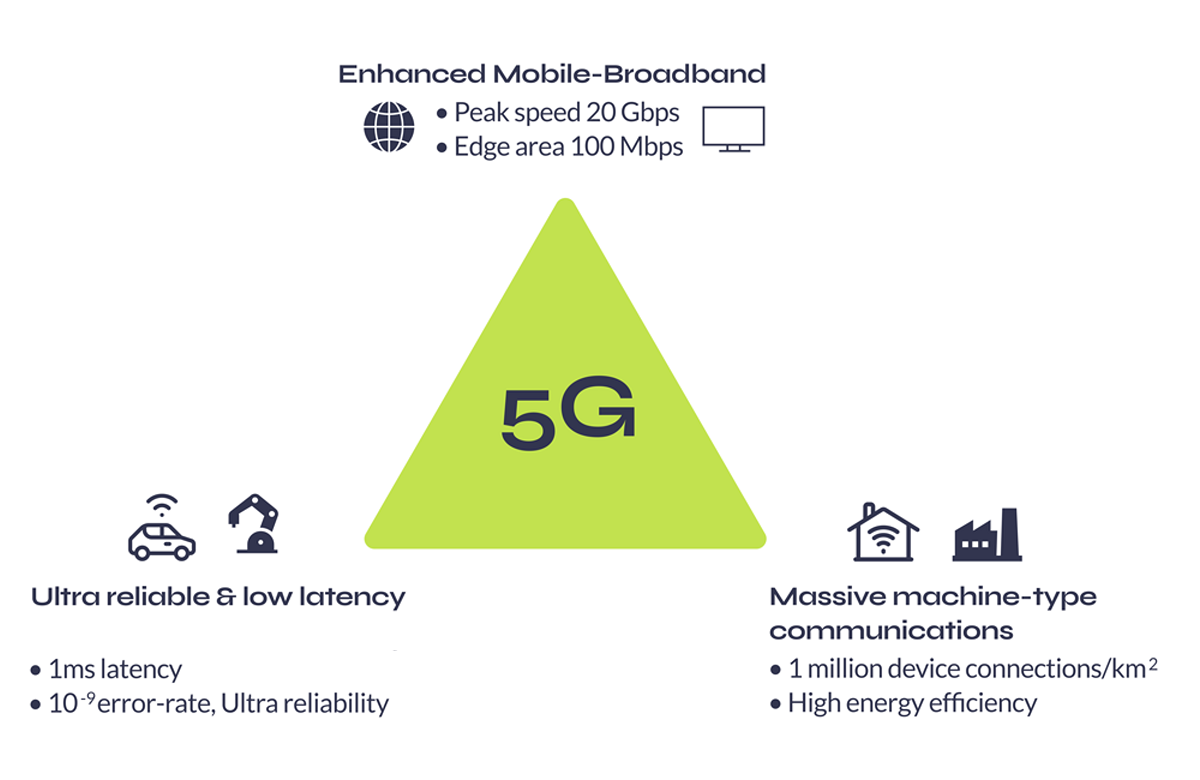
In addition, 5G can help to address some of the key challenges facing IoT, such as security and privacy, by providing more robust and reliable connectivity.
However, though 5G is capable of delivering broadband across short distances, it was designed to enhance coverage in urban regions with dense populations – not for rural, remote areas. 5G is currently sitting at an 8% global adoption rate, with terrestrial networks more widely covering just 15% of the globe. It’s clear telecommunications infrastructure alone cannot support this new, interconnected world.
As Tom Stroup, President of the Satellite Industry Association explains – “We’ve seen a recognition that many of the things that are desired by 5G can only be achieved with the ubiquitous coverage that satellite networks provide.”
The future of 5G: Satellites
Though connectivity is about more than coverage, one of the primary benefits of leveraging satellites in 5G networks is 100% global coverage. Unlike traditional mobile networks or fibre connectivity which rely on infrastructure, satellites can provide coverage anywhere and everywhere on Earth.
Another advantage is that Low Earth Orbit (LEO) satellites can deliver low latency, high speed connectivity. Latency is an important consideration for time critical applications such as remote surgery or autonomous vehicles where delays could lead to severe consequences. As LEO satellites are positioned between 160 – 2,000km (99 – 1243 miles) from the Earth’s surface, latency can be as low as 20 milliseconds which is comparable to that achieved via terrestrial networks. Moreover, the additional bandwidth would place 5G networks in the best possible position to accommodate ever increasing data traffic and number of connected devices.
Ultimately satellites could be used to complement 5G networks in three main ways:
- Expanding coverage to include rural, remote areas,
- Creating redundancies, and
- Additional backhaul.
Though it’s likely the role of satellites will look slightly different depending on the country and region and thus bandwidth and coverage already available, if successful these could lead to several additional business models.
But the how is slightly more complicated. Interoperability isn’t a new conversation within the communications industry but it wasn’t until 2017 that a formalized working group recommended 5G technology should be able to integrate non-terrestrial networks (NTN) such as fibre and satellites. Fast forward to July 2020, 3GPP Release 16 began to address this challenge.
3GPP Release 16: Benefits and shortfalls
Release 16 outlined multiple significant improvements not least, access technology standards for using higher frequency New Radio, supporting greater signal bandwidth and lower latency. Of those relating to interoperability, dual connectivity was extended to support NTN. Meaning in theory satellites could connect assets in rural areas where cellular coverage was limited and integrated access and backhaul was named as an area of study.
Despite these improvements, there were some associated shortfalls. One of the main challenges with 5G over satellite is latency. While as previously mentioned, Low Earth Orbit (LEO) satellites can achieve latency times as low as those associated with cellular, this isn’t always possible.
For geostationary (GEO) satellites, which are located roughly 34,000km above the Earth’s surface vs LEO’s 160 – 2,000km, the round-trip time is longer; closer to 270 – 540 milliseconds. As Release 16 didn’t account for this, it meant satellite operators needed to develop their own solution to mitigate potential latency issues.
What’s more, Release 16 didn’t account for mobility issues. This is more applicable to LEO satellites as these networks create a mesh of satellites around the globe and pass data as required between satellites and various ground stations. Particularly in the case of asset tracking applications where assets are moving, mobility and thus handing data from one satellite to another, becomes more important.
While Release 16 defines the interfaces between the UE and the core network, it does not provide detailed guidance on how to handle handovers between terrestrial and satellite networks. This can result in disruptions to the user experience as the UE moves between different network environments.
Ultimately Release 16 highlighted the importance of collaboration. Just one great example formed following Release 16 is that between Inmarsat and MediaTek in late 2020.
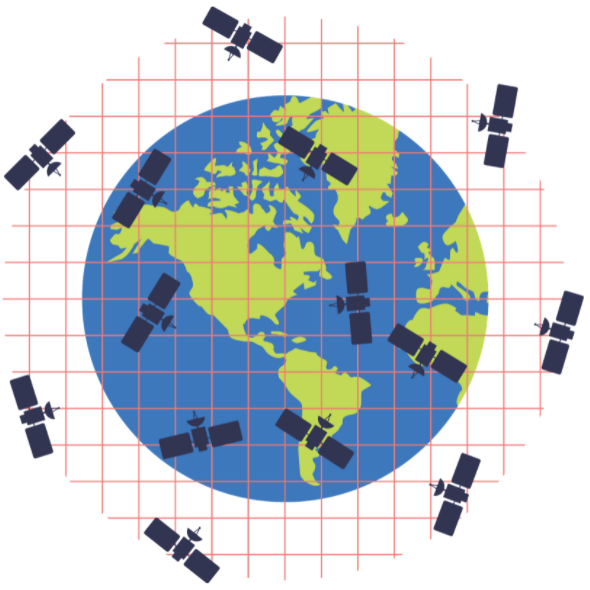
Their collaboration involved a successful field trial which ultimately contributed to 3GPP’s Release 17 standardization work on NTN. Utilising NB-IoT technology, a bi-directional link from MediaTek’s satellite-enabled narrowband service to Inmarsat’s Alphasat L-band GEO satellite was established. As Jonathan Beavon, Senior Director at Inmarsat concluded – “testing MediaTek’s standard NB-IoT chip over Inmarsat’s established GEO satellite network has proven technology from mobile networks works effectively over GEO satellites with little modification and will provide a very cost effective path to ubiquitous and hybrid global IoT coverage.”
Release 17
In 2022, 3GPP Release 17 marked the most recent standard for 5G Networks and was the first to outline technical specifications for direct-to-device 5G over satellite.
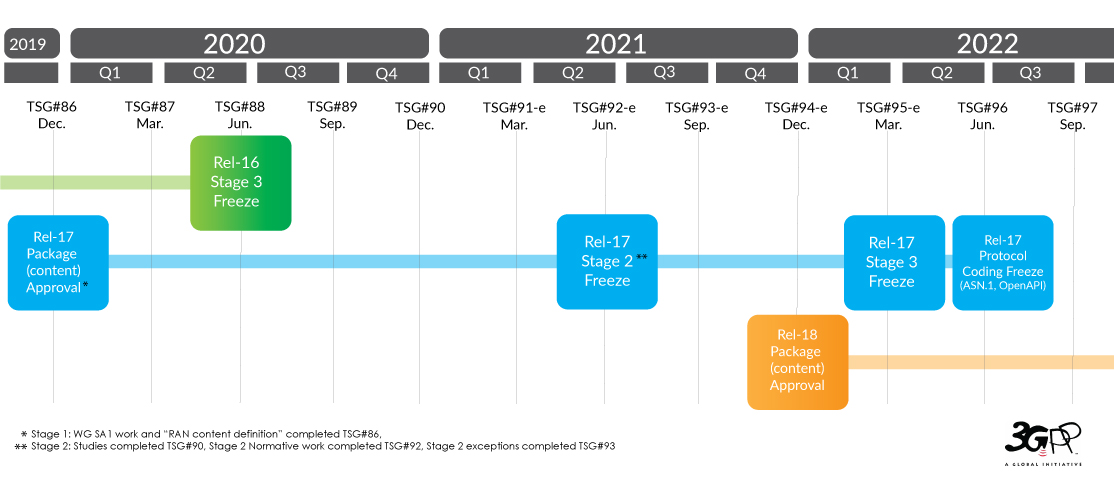
Specifically addressing interoperability, Integrated Access and Backhaul (IAB), and network slicing were extended to support NTN. The former, IAB, is particularly relevant for satellite operators as it helps address issues associated with latency by providing a more direct connection between device and satellite. Network slicing on the other hand is best exemplified by applications such as smart cities. Network slicing enables specific applications within the wider smart city network to utilize allocated network slices. So in the case of traffic monitoring and management, prioritising the utilization of a low latency, high bandwidth network slice ensures this application is better supported.
Release 17 also included additional features for dual connectivity. These cover support for more advanced network slicing configurations, which can help to improve the efficiency of network resources.
Moreover, Release 17 outlined enhanced support for Low Earth Orbit (LEO) satellites. Mobility issues were addressed by new features such as satellite handover, enabling seamless connectivity as devices move from one satellite to another.
The future of wireless communications
Release 17 was the first to position satellites as a critical component of the 5G ecosystem. Though this is a significant step forward, introducing new technology into any architecture is not something which can be achieved overnight and in the case of satellites, there are two relatively large challenges to integration: regulatory and capital. There may be regulatory issues related to spectrum allocation and licensing and there are well documented business challenges related to the cost of deploying and operating satellite networks.

In the case of satellites, it’s not quite as simple as changing a SIM or updating firmware over the air. Satellites are largely programmed prior to launch. In most cases it would mean launching additional satellites within a constellation to add the technology required to support these interoperability features.
If for example, satellite operators had incorporated 2G or 3G network technology, both of which are now in the process of sunsetting, those additional features would be becoming redundant. In short, there are benefits to maintaining proprietary technology and this is how many of the longer standing satellite operators have conducted business.
Currently many of the in-built phone functions depend on 5G NTN technology. However, despite the noise the reality of integration is slow. Qualcomm’s new Snapdragon X75 chipsets, leveraging Iridium’s satellite network are due for sampling in Q2 of 2023 (now), with expected select shipping estimated for Q3 and 4. Other companies, including Apple have demoable tech which incorporates NTN using Qualcomm X65 chipsets but this is limited to one usable band – n53.
In short, while advances are exciting and once this tech does land it’s expected to be very disruptive, we are still very much in the early stages of development. So the exact role of satellites within 5G architecture and Industry 4.0 more generally is unclear.

What is clear however, interoperability is top of mind for many just now. Just this week, 13th March 2023, Iridium’s CEO Matt Desch hosted a session at the SATELLITE 2023 event titled The Satellite-Cellular Convergence – A New Era for the Telco Industry?
The last few years within the satellite industry has seen incredible growth and innovation but not all new players entering space will be here for the long term. Just as not all technology within the 3GPP standard – NB-IoT (Narrowband Internet of Things), LTE-M (Long-Term Evolution for Machines), 5G NR – will be here for the long term. The challenge now lies with satellite operators and bodies such as 3GPP to create and maintain technology standards which all players can bet on. Ultimately, the only way we will achieve a fully connected world capable of supporting Smart Industry is with both 5G and Satellite technology because without connection, nothing is smart.
Ready to unlimit your IoT application...
So if you are working on an IoT project and would like some no pressure, objective advice, simply fill in the form and one of our expert team will get back to you.



